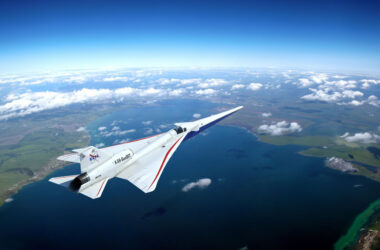Today NASA, alongside engineering giant Northrop Grumman, celebrated after they successfully ignited a massive solid rocket booster in Utah.

The two-minute test put the Solid Rocket Booster (SRB) hardware through its paces. Each SRB will be responsible for providing 3.6 million pounds of thrust when the American space agency’s Space Launch System (SLS) blasts off next year.
“I know what it’s like to fly the space shuttle rocket boosters and these five-segment boosters will add far greater capability than the shuttle had,” Northrop Grumman’s vice president of propulsion systems Charlie Precourt ( a former astronaut ) said during yesterday’s test webcast. “I’d love to ride on the SLS and can’t wait to hear the experiences of the first SLS astronaut crew.”
NASA Solid Rocket Booster successfully test fires
The five-segment booster burst to life at 3:05 pm Eastern time in Promontory, located northwest of Salt Lake City, for a two-minute hot fire demonstration.
At first, glance all appeared to go well and Northrop Grumman confirmed today that it was a successful test.
The boosters are a key component of the SLS and provide a combined 7.2 million pounds of thrust via two side boosters.
This represents around 75% of the system’s total output and is critical to getting the SLR out of Earths gravity well. The core stage of the SLS will be built by Boeing and uses former space shuttle main engines to provide the remaining thrust.
Flight Support Booster-1 test
The event is known as a Flight Support Booster-1 test and is designed to provide data to help engineers improve future designs of the rocket.
On the other side of the USA, a different NASA team at Kennedy Space Center, is working on booster segments already delivered to NASA earlier this year.
The team will methodically piece together these segments to create the two 177-foot SRB boosters needed for the SLS.
These boosters will power the SLS first uncrewed launch in late 2021 or early 2022 and mark the first milestone mission of NASA’s Artemis program which promises to take humans back to the moon in 2024.







